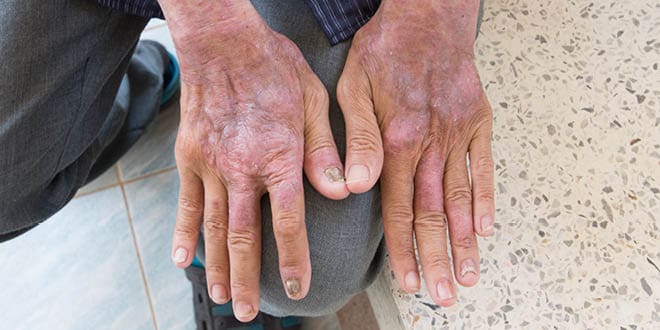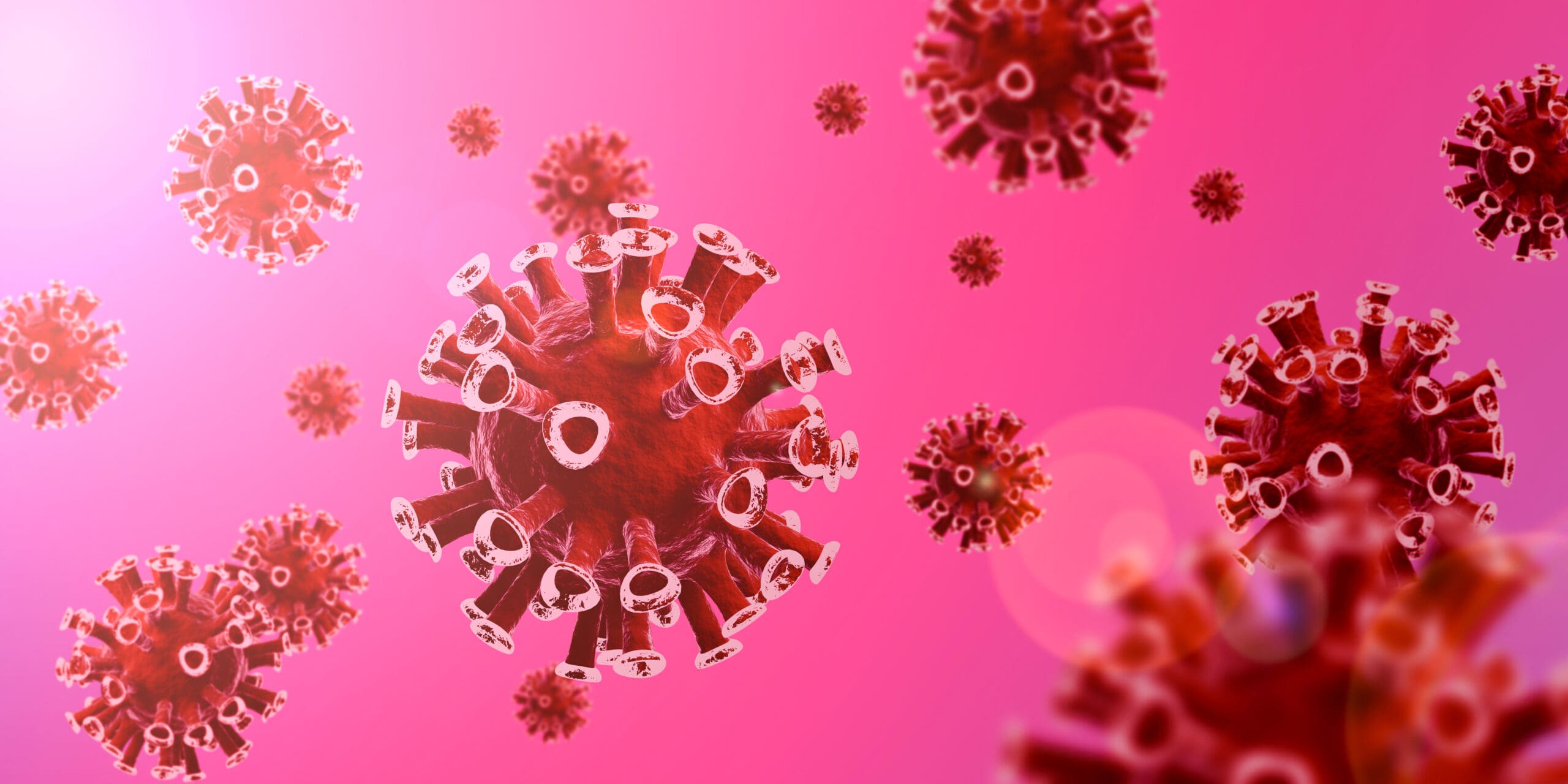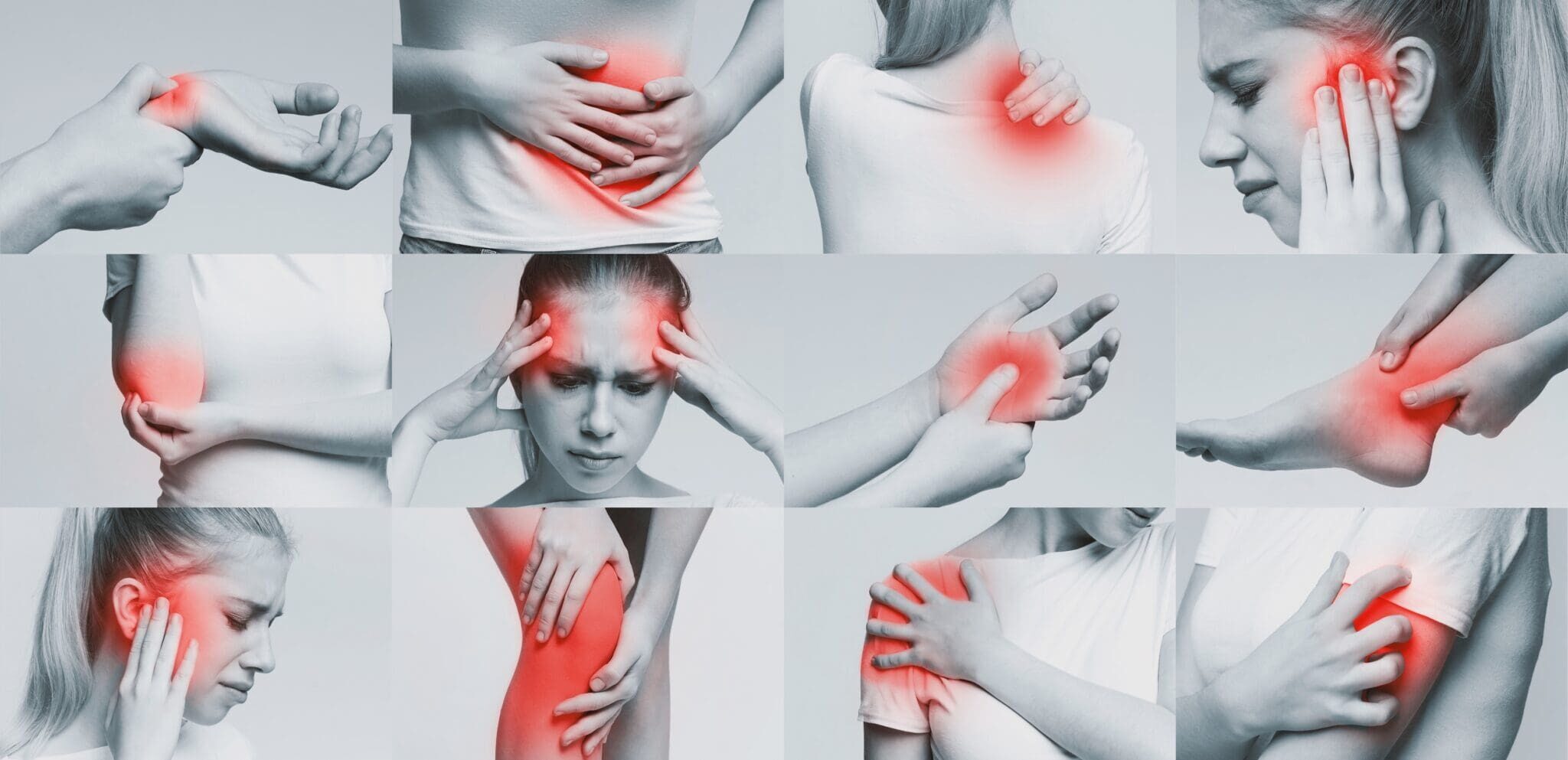What is it?
Scleroderma is an uncommon disorder of connective tissue characterised by thickening and hardening of the skin, particularly of the fingers. Internal organs like the oesophagus, lungs, intestine, kidneys and heart can also be involved.
What are the symptoms?
- Typically, the skin in scleroderma is bound down to underlying structures producing tapering in the fingers known as sclerodactyly. Fibrosis around the joints may cause flexion deformities and loss of fine movements.
- A binding down of the facial skin produces beaking of the nose, puckering around the mouth and limitation of mouth opening.
- Raynaud’s phenomenon, in which there is spasm of the arteries supplying the fingers, is characteristic of scleroderma. This is where the fingers turn from white to blue to red in response to cold, accompanied by numbness, tingling, burning and pain.
- Most patients with scleroderma have gastro-oesophageal reflux causing heartburn and indigestion. Occasionally a narrowing of the oesophagus develops leading to difficulty swallowing.
- Reduced motility of the intestine may occur, resulting in constipation and bloating, or sometimes encouraging bacterial overgrowth and causing diarrhoea.
- Kidney involvement in scleroderma may produce a severe rise in blood pressure or rapidly progressive kidney failure, requiring urgent treatment.
- Fibrosis (hardening and stiffening) of the lungs is the most common manifestation of lung involvement in scleroderma and may be fatal.
- Fibrosis of the heart muscle causing heart failure is a late slowly progressive complication in severe cases.
- Arthritis affecting numerous joints is frequently the first sign of scleroderma; acute inflammation of the muscles occurs occasionally.
- Impotence is common in men with severe scleroderma, and female fertility is often reduced.
The course and severity of scleroderma is quite variable. In mild cases, skin involvement is limited to thickening or swelling of the fingers with no internal organ involvement, except for perhaps the oesophagus. At the other end of the spectrum there is diffuse marked skin thickening of most of the body with severe internal organ involvement progressing to death within a few years.
What causes it?
The cause of scleroderma is autoimmune.
Treatment and general recommendations
- Cessation of smoking is absolutely crucial to improve the circulation to the fingers and avoid Raynaud’s phenomenon.
- Keeping warm in cold weather is important and gloves and socks are helpful in warming hands and feet.
- Raising the head of the bed, and avoiding large meals and bed-time snacks will help to reduce the symptoms of indigestion.
- Drink two litres of water daily.
Diet
- Follow the strategies outlined in the book “Healing Autoimmune Disease“.
- Include often – oily fish like mackerel, herring, tuna or salmon; high fibre foods like fruits, vegetables, legumes, nuts and seeds. Avoid – saturated animal fats, fried foods, coffee and processed foods containing preservatives and artificial chemicals.
- Avoid gluten and dairy products. Gluten is found in wheat, rye, oats, barley and many processed foods.
Juices
The following juice recipes are recommended from “Raw Juices Can Save Your Life” book:
• “Immune Dysfunction” Juice on page 97
• “Pain Relief ” Juice on page 121
and other raw vegetable juices particularly using cabbage, celery, carrot, beetroot, orange and pineapple.
Orthodox Medical Treatment
Management of scleroderma depends on the extent and severity of the disease.
In mild cases, explanation and reassurance may be all that is required. The drug penicillamine, which was developed for the treatment of rheumatoid arthritis, has been found to modify skin disease in scleroderma. Because of its potential toxicity, penicillamine is reserved for use in cases where there is extensive skin involvement of the limbs and trunk. The response is usually slow over many months.
Possible side effects include gastrointestinal upset, skin rashes, kidney disease and reduced white cell counts. Regular blood counts and urine tests are mandatory during treatment.
Other treatments used in scleroderma are directed towards the particular symptoms and complications.
Raynaud’s phenomenon may respond to calcium channel blocking agents like nifedepine or felodepine. Patients suffering symptoms of gastro-oesophageal reflux may be treated with H2-receptor antagonists such as cimetedine or famotidine, or proton pump inhibitors like omeprazole, sometimes with the addition of a prokinetic agent like cisapride. Cisapride is also useful for reduced intestinal motility. Bacterial overgrowth in the bowel may require treatment with antibiotics such as tetracycline or metronidazole. Angiotensin converting enzyme (ACE) inhibitors have played a major role in the successful management of kidney disease in scleroderma. Inflammatory arthritis in early scleroderma is treated with anti-inflammatory drugs.









Leave A Comment